CollectA has emerged as one of the most prolific producers of dinosaur figures, with a few other Mesozoic reptiles and some mammals here and there for variety. They’ve developed a reputation for giving some obscure species the plastic treatment, but in general those species have been fairly close relatives of the old standards. The prehistoric marine tube, released in the summer of 2017, is a welcome break from that pattern. It consists of twelve different animals from across the Phanerozoic, and from across the animal tree of life.
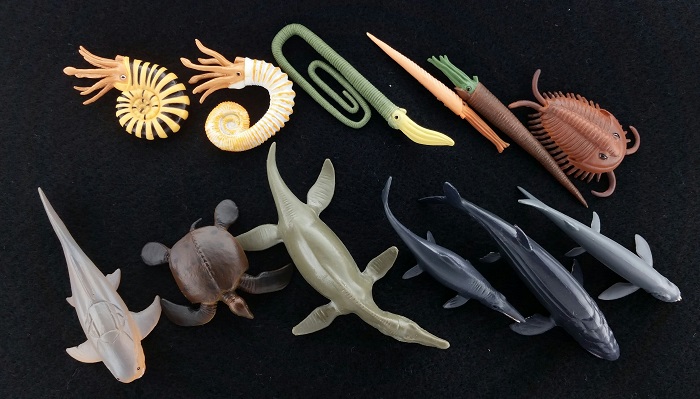
The new CollectA figures are mostly around the same size as the ones from the sadly discontinued Safari Ltd prehistoric sea life Toob from a few years back. The two together give you a nice mix of animals, with no genera repeated. Let’s go through the CollectA figures one by one:
From the Cambrian period comes Olenoides, a common trilobite in the Burgess Shale. This figure is about 4 cm long, not counting appendages, making it around half life size. It resembles Olenoides in having cerci (the appendages at the tail end), but the sculpturing of the cephalon (head) is pretty far off the mark. Still, for CollectA’s first ever arthropod figure, it’s not too bad. Certainly much better than their first dinosaurs.
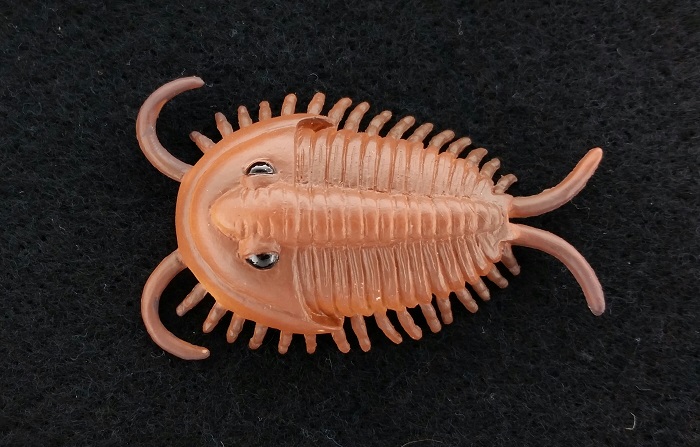
From the Ordovician period (and persisting into the Silurian), is the gigantic cephalopod Cameroceras, which is more closely related to the modern nautilus than either is to the ammonites in this set. This version is about 7 cm long, or around 1:85 scale. There’s precious little available for Ordovician toys, even though it’s when stereotypically Paleozoic marine faunas were really established. So this is a welcome addition in my book.
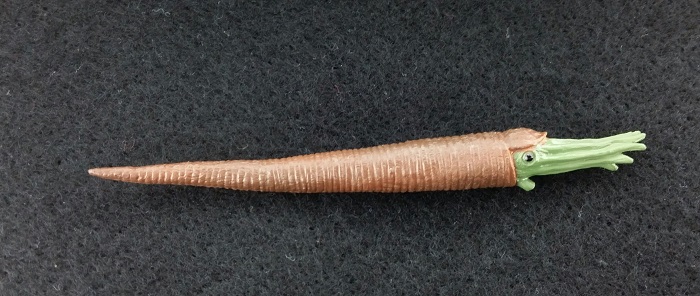
Moving on to the Devonian, we come to everybody’s favorite giant armored fish, Dunkleosteus. This one is 7 cm long, or about 1:100 scale. It’s CollectA’s very first arthrodire, and their very first Devonian animal (are you starting to pick up on a theme?). They did a pretty good job, avoiding the common pitfall of making the sclerotic rings (internal eyeball bones) visible externally. The tail isn’t how I would reconstruct it, but reasonable people can disagree about how something the size of Dunkleosteus swam. The plates are about the right shape, and they look like they have some actual skin on them, which is a welcome change from some very zombie-esque reconstructions.
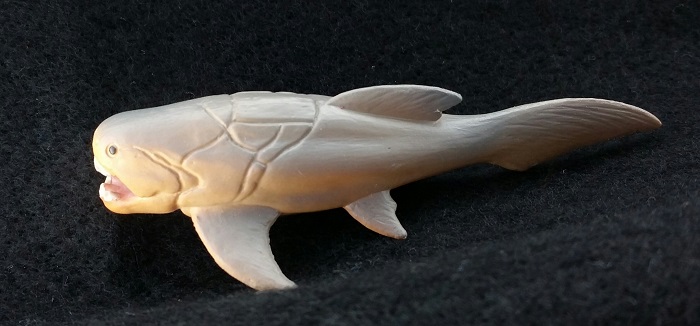
From the earliest Jurassic, the large ichthyosaur Temnodontosaurus. This figure is about 8 cm long, or roughly 1:110 scale. It’s similar to the standard size version except that it isn’t giving birth. If it didn’t have adult proportions, it could almost stand in as the standard version’s pup. It has the unfortunate ridge of scales around the eyes, although at this small scale it doesn’t look as egregious.
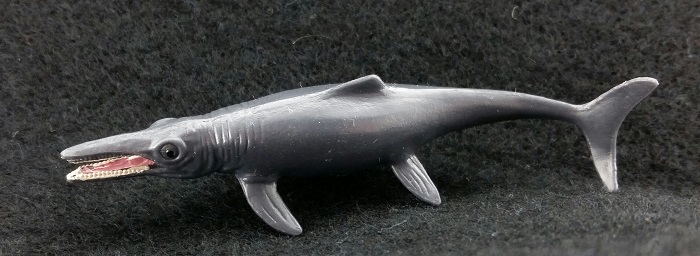
Pliosaurus is the real giant of the set, at 11 cm long (about 1:110 scale). It differs from its deluxe counterpart in that it lacks the little lampreys hitching a ride on its back. Like the Temnodontosaurus, it doesn’t correct the problems with the larger figure’s head, namely, the odd ridge over the eye and the too-prominent fenestrae.

Now Leedsichthys, a gigantic, plankton-eating contemporary of Pliosaurus. Conveniently, they also scale well together: at 9 cm long, this is roughly 1:120 scale, though since it’s mostly known from pieces of the head, length estimates are uncertain. Not only is this CollectA’s first actinopterygian fish (well, this and the Xiphactinus), it’s one of very, very few prehistoric actinopterygian toys ever made. There have probably been fewer than 10, which is pretty bad for a group that has a 400 million year history and includes 95 out of every 100 animals you would think of as a fish. This is a really nice rendition, though necessarily speculative, since much of the skeleton of Leedsichthys was cartilaginous rather than bony and thus fossilized poorly. The one likely flaw I can spot is that it has two pelvic fins and no anal fin. Members of the family it belonged to generally had greatly reduced pelvic fins, and there is no evidence that Leedsichthys had them at all, but it probably did have an anal fin.

The Lower Cretaceous saw the rise of the heteromorph ammonites, the ones that evolved un-coiled shell shapes. Hard to know how they swam around looking like this. Australiceras was one of the more conservative of these, and on the smaller side. This little figure is about 1:5. It has 8 arms, though it should probably have 10 (more on that later).
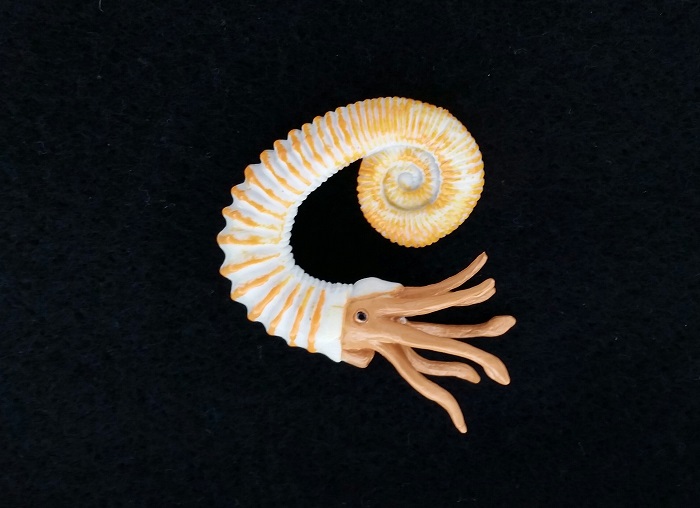
One of the largest ammonites of all time, Parapuzosia is the only “standard” (non-heteromorph) ammonite in the set. A little over 3.5 cm across its longest axis, this figure is about 1:40-1:60 (specimens varied in size). Like the other ammonites in the set, it shows the aptychus (the roughly triangular mineralized structure usually found separated from the shell) as occluding the shell opening, in the manner of a nautilus hood. That arrangement is thought to be incorrect, but it is by far the most common way that aptychi are reconstructed.
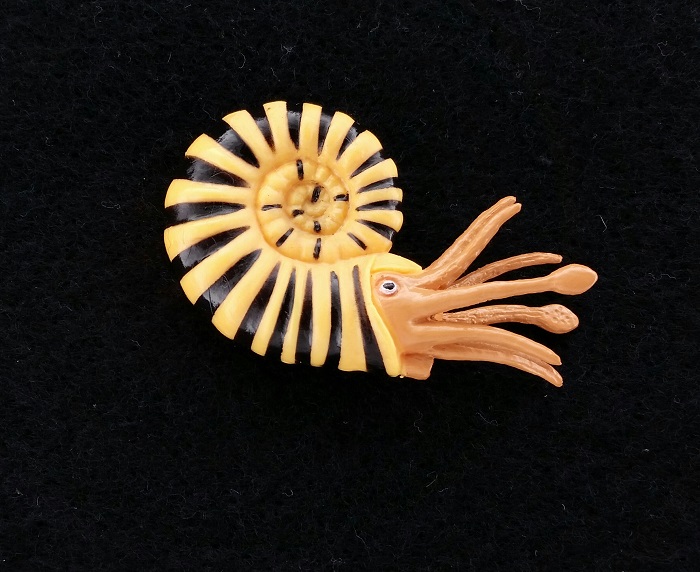
The huge marine turtle Archelon, known from the Cretaceous Seaway that once covered North America’s central plains, is a nice addition to this set. This figure fairly captures the broad dimensions of the shell, although it might be just a shade too flattened. It’s around 4.5 cm long, making it 1:85 scale. Very cute, and the first turtle from CollectA!
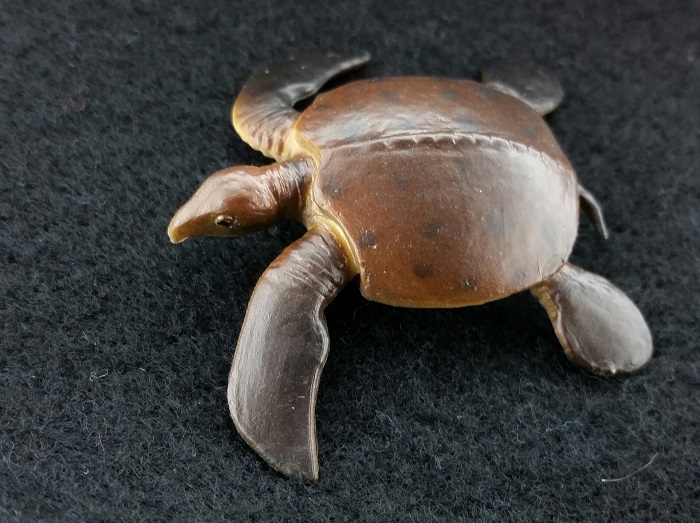
At the same time Archelon was swimming around the Cretaceous Seaway, so was the huge ichthyodectid Xiphactinus. At around 7 cm long, it’s roughly 1:85 scale. Xiphactinus is known from plenty of good skeletal material, so it was easier to get right: it has all the right fins in all the right places. The detail on the facial dermal bones and the teeth are pretty decent for a toy this small. One of the gems of the set.
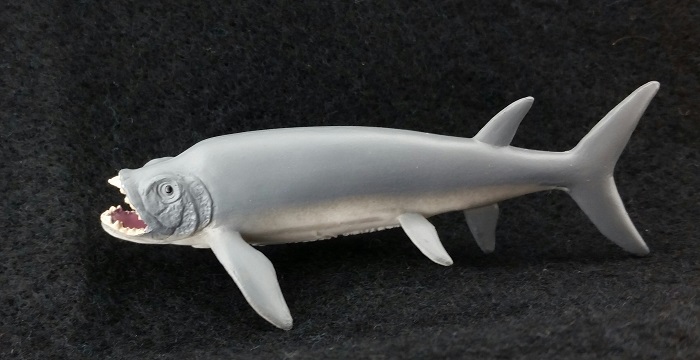
Baculites was a heteromorph ammonite from the latest Cretaceous. Its shell was so thoroughly uncoiled that it looked like a straight-shelled cephalopod like the orthocerids of 100 million years earlier. At just over 5 cm long, this is roughly 1:40 scale, so it fits in great alongside some of your big marine reptiles.
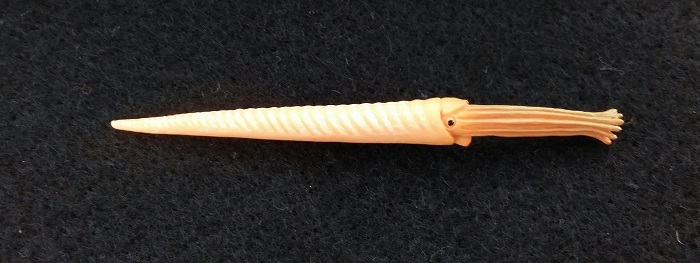
Another late Cretaceous ammonite, Diplomoceras is commonly compared to a paper clip. The plastic of this toy is flexible enough that you could use it that way! Its shell is just shy of 6 cm measured in a straight line from end to end, so it’s about 1:35-1:40 scale, working well with the Baculites in dioramas. This figure has 10 arms, but some of the other ammonites in this set have 8. No published fossils show the actual anatomy of the soft parts of ammonites, unfortunately, although fossilized traces in mud suggest that they had few arms, like squid, rather than many tentacles, like nautilus. Available embryological evidence from living cephalopods suggests that 10 is a likelier number, but it’s peculiar in any event that CollectA made some with 8 and some with 10.

Despite minor accuracy issues with some of the figures, this is a fantastic set. Unlike the dinosaur mini tubes that CollectA has released, which have been comprised almost entirely of miniature versions of standard-sized figures, this tube is mostly brand new animals–only the Temnodontosaurus and Pliosaurus are remakes of previous releases. It contains lots of firsts for CollectA: first protostomes (in fact, first invertebrates), first actinopterygians, first turtle, first Paleozoic animals of any description. I would love to see a few of these as large figures, especially Leedsichthys and Xiphactinus (but I have a soft spot for fishes). More importantly, I’d love to see additional tubes like this, full of smaller animals that work well in dioramas with larger figures, or animals that might be hard to market as stand-alone toys. Keep ’em coming, CollectA! For now, you can find these at a variety of online retailers, and outside of North America you might even be able to find them in brick-and-mortar stores.
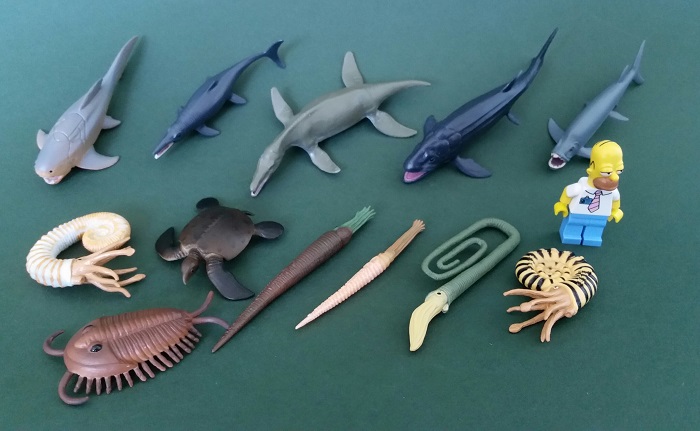
Disclaimer: links to Ebay and Amazon on the DinoToyBlog are affiliate links, so we make a small commission if you use them. Thanks for supporting us!




Can anyone help me find one of these in the states?! All my son wants for Christmas is an Orthocone and I can’t find anywhere! The only place I found this tube was in England. I live in Texas, any ideas?
Go to Amazon or eBay.
Nice review! By ‘first arthropod’ I assume you mean among their prehistoric animals. CollectA has several very nice extant arthropods 🙂
Very true. All the ‘firsts’ in this review are with reference to their prehistoric line. Their sea life and wildlife lines also have a couple of turtles, at least one cephalopod, and at least one actinopterygian. It’s really just the prehistoric line that has, until now, sampled from a relatively narrow slice of the animal tree of life.
Thanks, everyone! Glad to see I’m not the only one who wants some bigger prehistoric fish!
I really hope they do more sets like this in the future. I love the diversity of the critters in this set. I also love the inclusion of that “paper clip” ammonite. I do hope they make larger versions of the fish included as well at some point.
Great review! I echo your desire for larger versions of the three fish at least, and for future CollectA tubes to contain more original figures rather than downsized versions of old ones.
I find this CollectA toob of prehistoric sea life even better than that of Safari Ltd’s.
Safari Ltd’s prehistoric sea life toob contained rather more famous species whereas this one contains more obscure/rather unknown species, which we all love from CollectA for taking the decision to do so. Accuracy and simplicity perhaps are the motos from CollectA.
Detailed review on each figure, and the crisp photographs. The Lego Homer in the last shot in comparison to the prehistoric marine figures as funny. My favourites from this set are the Xiphactinus, Leedsichthys, and the Archelon. Hope that CollectA will make their adult parents in the future.
Wished they could make a Carcharodon Megalodon, either in the toob or a adult version. Never lose hope though. Once again, sharp photos and detailed review 😀
My favorites are definitely the xiphactinus and leedsichthys fish. I hope that soon Collecta will make larger versions of these figures. On the other hand I congratulate Halichoeres for this magnificent review.